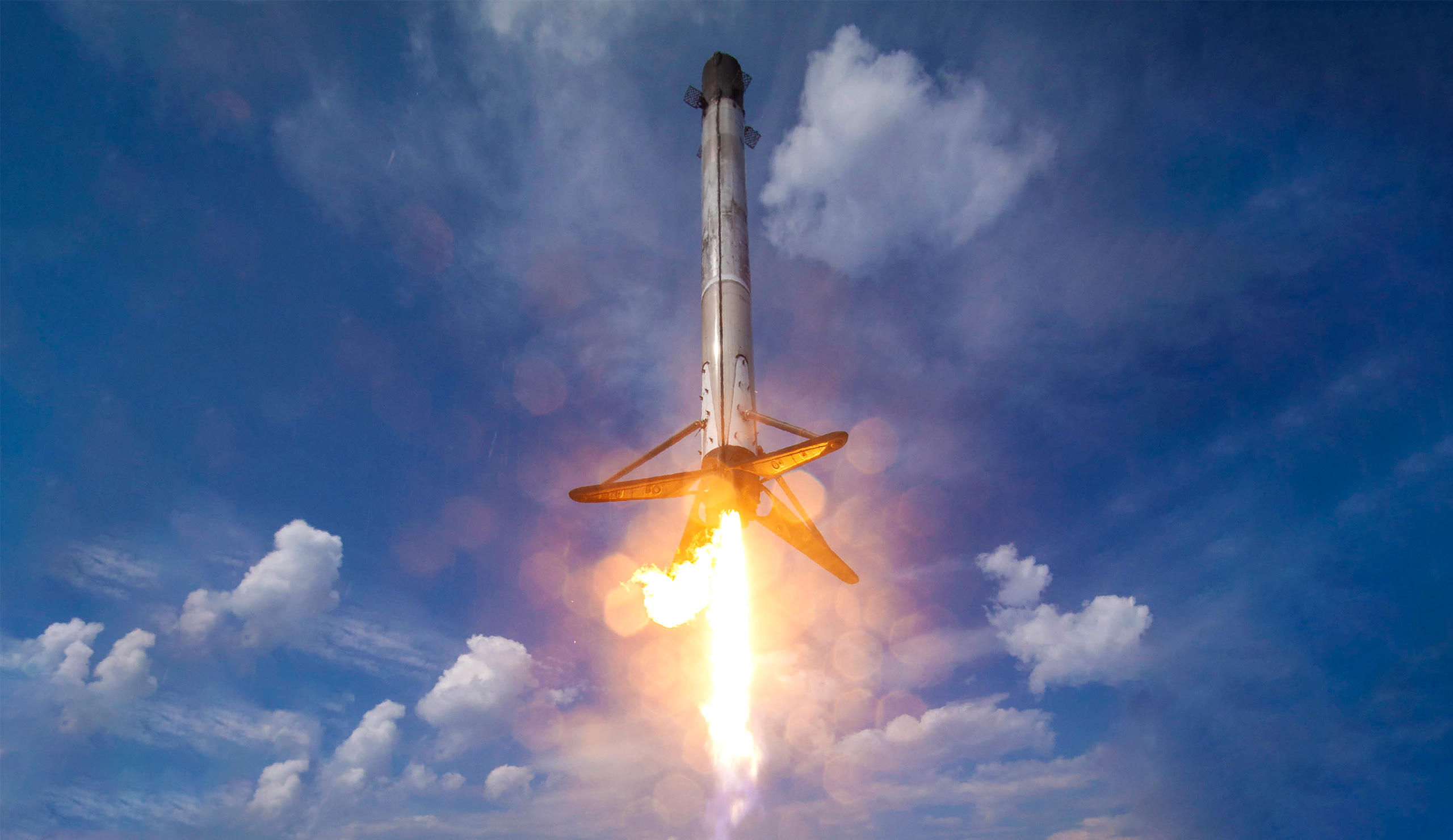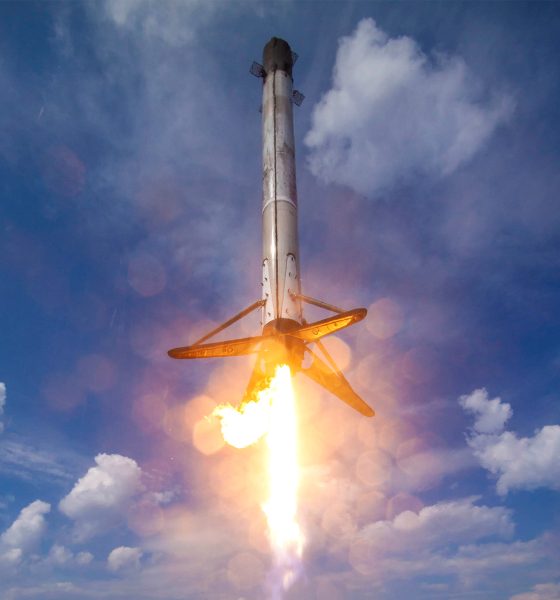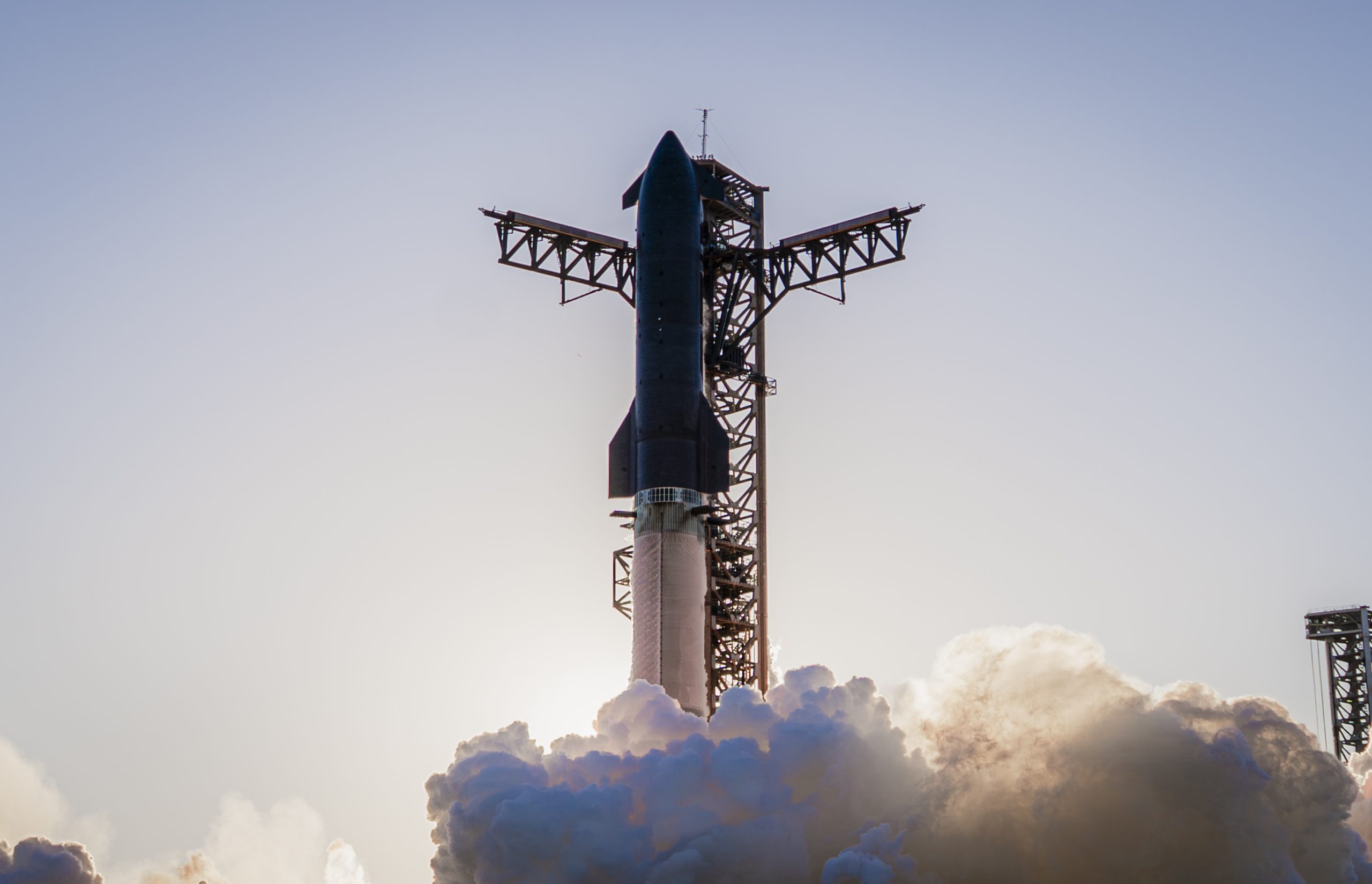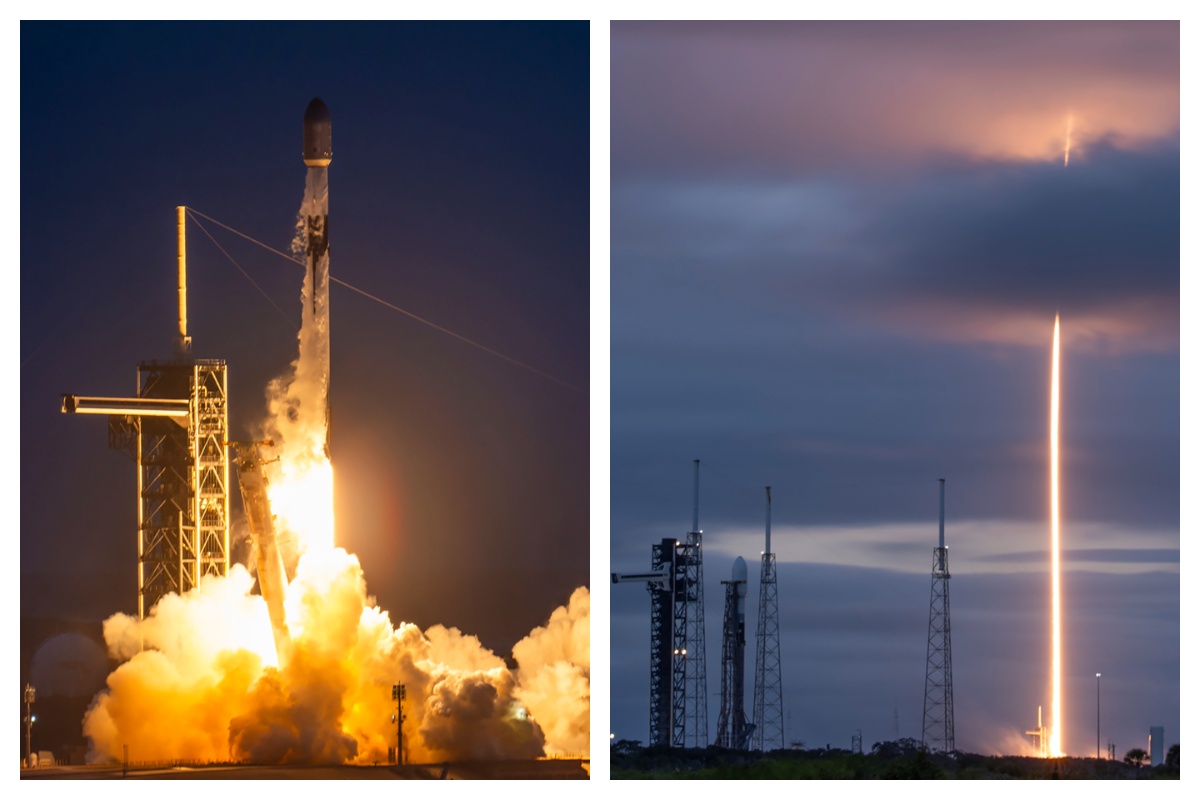

News
SpaceX fires up Falcon 9 for first flight-proven ‘national security’ launch
On June 12th, SpaceX successfully fired up a once-flown Falcon 9 booster in the lead-up to the company’s fourth launch of an upgraded GPS III navigation satellite for the US military.
Dating back several years, SpaceX has won a vast majority of GPS III launches thanks to Falcon 9’s exceptional combination of reliability and affordability, securing all five competitively-awarded contracts. The company aced its first GPS III launch in December 2019, expending a brand new Falcon 9 booster (B1054) due to customer – not performance – requirements necessary to ensure extreme margins in the event of some kind of anomaly or underperformance during launch.
In June 2020, SpaceX once again launched a GPS III satellite for the US military, though this time the company was allowed to attempt to land the Falcon 9 booster supporting the mission – which it successfully recovered without issue. Less than five months after GPS III SV03’s successful launch, SpaceX turned around and launched GPS III SV04 – again with an all-new Falcon 9 rocket – and recovered the booster at sea. A few months prior, however, the US Space and Missile Systems Center (SMC) announced a contract modification that would allow SpaceX to begin reusing Falcon 9 boosters on National Security Space Launch (NSSL) missions – beginning with the company’s fourth GPS III launch.
Seven months later, SMC revealed that it has officially cleared SpaceX to begin launching GPS III (and other official NSSL) satellites on flight-proven Falcon rockets. Notably, that might include a Falcon Heavy launch – USSF-52 – planned as early as January 2022 that could reuse two new side boosters scheduled to debut on USSF-44 as early as October 2021.
In the meantime, though, GPS III SV05 – scheduled to launch no earlier than (NET) 12:09 pm EDT (16:09 UTC), Thursday, June 17th – is just two days away from becoming the first NSSL (formerly EELV) satellite to launch on a flight-proven commercial rocket. GPS III SV05 will reuse the same Falcon 9 booster (B1062) that successfully launched GPS III SV04 seven months prior.
While an extremely slow turnaround relative to any other modern Falcon 9 or Falcon Heavy booster, those seven months mainly gave the US military margin to fully certify flight-proven Falcons and satellite manufacturer Lockheed Martin time to deal with shortage and coronavirus-related delays. On June 12th, after rolling out to SpaceX’s Cape Canaveral LC-40 launch pad, GPS III SV05’s Falcon 9 rocket completed a wet dress rehearsal that culminated in a successful several-second static fire of booster B1062.
Now cleared for flight, Falcon 9 will be brought horizontal and roll back to LC-40’s integration hangar, where SpaceX will install the encapsulated GPS III SV05 satellite and payload fairing on top of the rocket’s expendable second stage.
The integrated payload assembly rolled from a nearby payload processing facility to LC-40 on June 13th, giving SpaceX four days to complete integration, roll Falcon 9 back out to the launch pad, and prepare the rocket for flight. Now alone on the East Coast for the first time in 12 months, drone ship Just Read The Instructions (JRTI) departed Port Canaveral for the GPS III SV05 booster recovery zone on the same day, followed by the latest in a line of temporary fairing recovery ships on June 14th to scoop the mission’s nosecone halves out of the Atlantic.
L-3 weather forecasts predict a 40% chance of delay on June 17th, improving to 30% on June 18th. Stay tuned for webcast details as SpaceX nears the first of many flight-proven launches for the US military.

Elon Musk
Tesla CEO Elon Musk confirms Robotaxi safety monitor removal in Austin: here’s when
Musk has made the claim about removing Safety Monitors from Tesla Robotaxi vehicles in Austin three times this year, once in September, once in October, and once in November.

Tesla CEO Elon Musk confirmed on Tuesday at the xAI Hackathon that the company would be removing Safety Monitors from Robotaxis in Austin in just three weeks.
This would meet Musk’s timeline from earlier this year, as he has said on several occasions that Tesla Robotaxis would have no supervision in Austin by the end of 2025.
On Tuesday, Musk said:
“Unsupervised is pretty much solved at this point. So there will be Tesla Robotaxis operating in Austin with no one in them. Not even anyone in the passenger seat in about three weeks.”
Musk has made the claim about removing Safety Monitors from Tesla Robotaxi vehicles in Austin three times this year, once in September, once in October, and once in November.
In September, he said:
“Should be no safety driver by end of year.”
The safety driver is just there for the first few months to be extra safe.
Should be no safety driver by end of year.
— Elon Musk (@elonmusk) September 4, 2025
On the Q3 Earnings Call in October, he said:
“We are expecting ot have no safety drivers in at least large parts of Austin by the end of this year.”
Finally, in November, he reiterated the timeline in a public statement at the Shareholder Meeting:
“I expect Robotaxis to operate without safety drivers in large parts of Austin this year.”
Currently, Tesla uses Safety Monitors in Austin in the passenger’s seat on local roads. They will sit in the driver’s seat for highway routes. In the Bay Area ride-hailing operation, there is always a Safety Monitor in the driver’s seat.
Three weeks would deliver on the end-of-year promise, cutting it close, beating it by just two days. However, it would be a tremendous leap forward in the Robotaxi program, and would shut the mouths of many skeptics who state the current iteration is no different than having an Uber.
Tesla has also expanded its Robotaxi fleet this year, but the company has not given exact figures. Once it expands its fleet, even more progress will be made in Tesla’s self-driving efforts.
News
SpaceX reportedly mulling IPO, eyeing largest of all time: report
“I do want to try to figure out some way for Tesla shareholders to participate in SpaceX. I’ve been giving a lot of thought to how to give people access to SpaceX stock,” Musk said.

SpaceX is reportedly mulling an initial public offering, eyeing what would be the largest valuation at the time of availability of all time, a new report from Bloomberg said on Tuesday.
It is one of many reports involving one of Elon Musk’s companies and a massive market move, as this is not the first time we have seen reports of an IPO by SpaceX. Musk himself has also dispelled other reports in the past of a similar nature, including an xAI funding round.
SpaceX and Musk have yet to comment on the report. In the past, untrue reports were promptly replied to by the CEO; this has not yet gained any response, which is a good sign in terms of credibility.
However, he said just a few days ago that stories of this nature are inaccurate:
“There has been a lot of press claiming SpaceX is raising money at $800B, which is not accurate. SpaceX has been cash flow positive for many years and does periodic stock buybacks twice a year to provide liquidity for employees and investors. Valuation increments are a function of progress with Starship and Starlink and securing global direct-to-cell spectrum that greatly increases our addressable market. And one other thing that is arguably most significant by far.”
There has been a lot of press claiming @SpaceX is raising money at $800B, which is not accurate.
SpaceX has been cash flow positive for many years and does periodic stock buybacks twice a year to provide liquidity for employees and investors.
Valuation increments are a…
— Elon Musk (@elonmusk) December 6, 2025
Musk has discussed a potential IPO for SpaceX in recent months, as the November 6 shareholder meeting, as he commented on the “downsides” of having a public company, like litigation exposure, quarterly reporting pressures, and other inconveniences.
Nevertheless, Musk has also said he wants there to be a way for Tesla shareholders to get in on the action. At the meeting in early November, he said:
“I do want to try to figure out some way for Tesla shareholders to participate in SpaceX. I’ve been giving a lot of thought to how to give people access to SpaceX stock.”
Additionally, he added:
“Maybe at some point., SpaceX should become a public company despite all the downsides of being public.”
Musk has been historically reluctant to take SpaceX public, at times stating it could become a barrier to colonizing Mars. That does not mean it will not happen.
Bloomberg’s report cites multiple unidentified sources who are familiar with the matter. They indicate to the publication that SpaceX wants to go public in mid-to-late 2026, and it wants to raise $30 billion at a valuation of around $1.5 trillion.
This is not the first time SpaceX has discussed an IPO; we reported on it nine years ago. We hope it is true, as the community has spoken for a long time about having access to SpaceX stock. Legendary investor Ron Baron is one of the lucky few to be a SpaceX investor, and said it, along with Tesla, is a “lifetime investment.”
Tesla bull Ron Baron reveals $100M SpaceX investment, sees 3-5x return on TSLA
The primary driver of SpaceX’s value is Starlink, the company’s satellite internet service. Starlink contributes 60-70 percent of SpaceX’s revenue, meaning it is the primary value engine. Launch services, like Falcon 9 contracts, and the development of Starship, also play supporting roles.
News
SpaceX reaches incredible milestone with Starlink program

SpaceX reached an incredible milestone with its Starlink program with a launch last night, as the 3,000th satellite of the year was launched into low Earth orbit.
On Monday, SpaceX also achieved its 32nd flight with a single Falcon 9 rocket from NASA’s Kennedy Space Center.
The mission was Starlink 6-92, and it utilized the Falcon 9 B1067 for the 32nd time this year, the most-used Falcon booster. The flight delivered SpaceX’s 3000th Starlink satellite of the year, a massive achievement.
There were 29 Starlink satellites launched and deployed into LEO during this particular mission:
Falcon 9 launches 29 @Starlink satellites from Florida pic.twitter.com/utKrXjHzPN
— SpaceX (@SpaceX) December 9, 2025
SpaceX has a current goal of certifying its Falcon boosters for 40 missions apiece, according to Spaceflight Now.
The flight was the 350th orbital launch from the nearby SLC-40, and the 3,000 satellites that have been successfully launched this year continue to contribute to the company’s goal of having 12,000 satellites contributing to global internet coverage.
There are over five million users of Starlink, the latest data shows.
Following the launch and stage separation, the Falcon 9 booster completed its mission with a perfect landing on the ‘Just Read the Instructions’ droneship.
The mission was the 575th overall Falcon 9 launch, highlighting SpaceX’s operational tempo, which continues to be accelerated. The company averages two missions per week, and underscores CEO Elon Musk’s vision of a multi-planetary future, where reliable connectivity is crucial for remote work, education, and emergency response.
As Starlink expands and works toward that elusive and crucial 12,000 satellite goal, missions like 6-92 pave the way for innovations in telecommunications and enable more internet access to people across the globe.
With regulatory approvals in over 100 countries and millions of current subscribers, SpaceX continues to democratize space, proving that reusability is not just feasible, but it’s also revolutionary.








